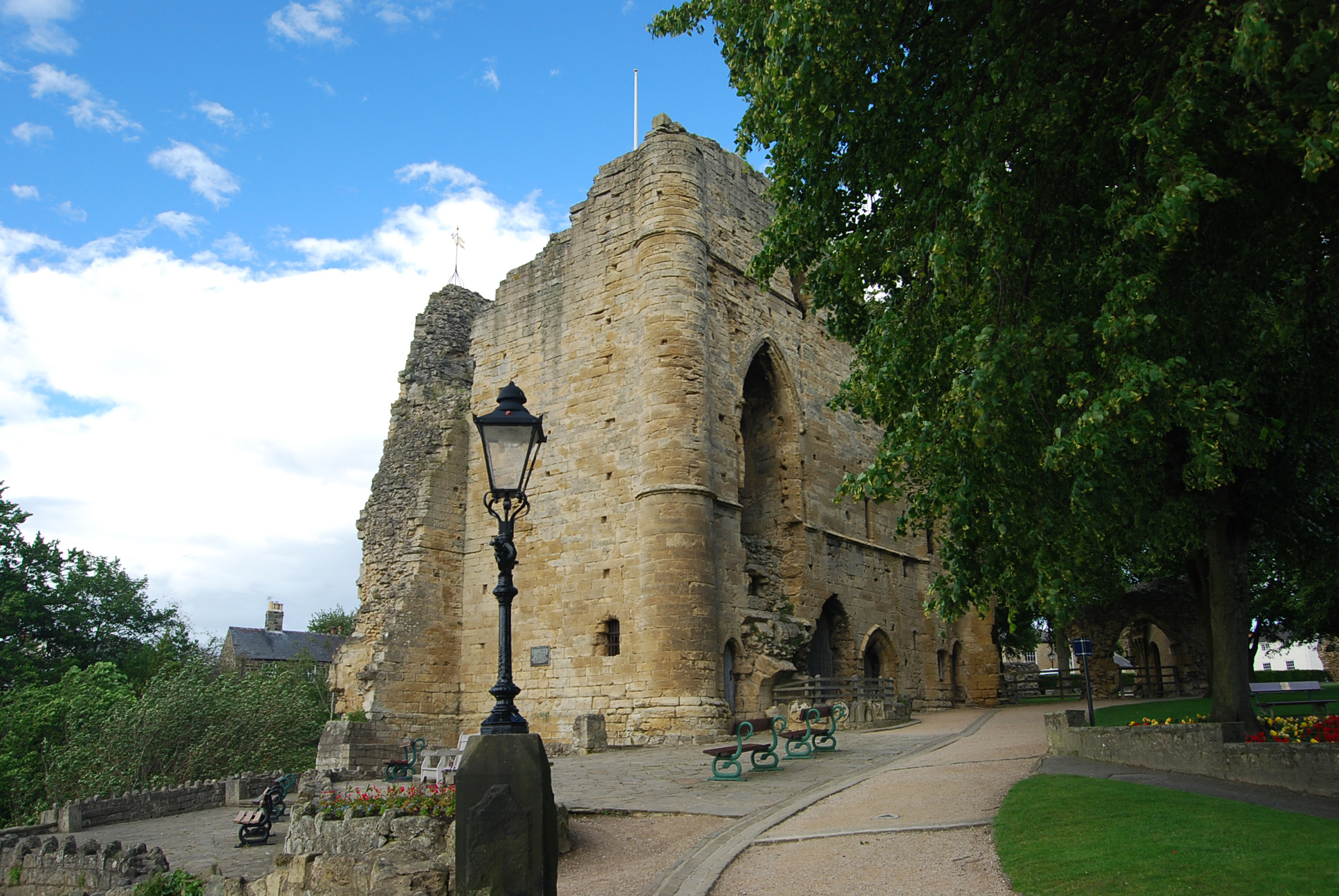History
Knaresborough Castle resides on an outcrop overlooking the town of Knaresborough and Nidd Valley in North Yorkshire, England. The first reference to the castle occurred in 1130 when it was recorded in the royal Pipe Rolls that 11 pounds were spent on the castle by its custodian Eustice FitzJohn. The castle later played a historical role in 1170 when its owner Hugh de Morville fled to it after taking part in the infamous murder of Archbishop Thomas Becket in Canterbury Cathedral.

Knaresborough Castle was owned by royalty through the 15th century. King John, who used the castle as one of his main administrative strongholds in Northern England, spent lots of money on improvements and upkeep. In addition to the castle, he adored hunting in the forest of Knaresborough. The castle was held for the King during the Barons' Revolt in 1215-1216.
The castle was rebuilt by Edward I and completed by Edward II between 1307 and 1312, including the construction of the Great Keep or King's Tower in 1310. Edward II gave the castle to Piers Gaveston, his favorite Noblemen, and stayed at the castle himself when the unpopular Gaveston was besieged at Scarborough Castle.
In 1317, John de Lilburn siezed Knaresborough Castle for Thomas of Lancaster. Thereafter followed a three-month siege during which a siege engine breached one of the castle walls and allowd the castle to be retaken for the King. In 1318, a raiding force of Scots burnt much of the town of Knaresborough to the ground, but most of the citizens were able to take refuge in the castle.
After Queen Phillipa, the wife of Edward III, received the Honour and Castle of Knaresborough as part of the marriage settlement in 1331, she transformed the castle into a proper royal residence while spending many summers there.
In 1372, John of Gaunt, Duke of Lancaster, exchanged his lands in Richmond for the Honour and castle of Knaresborough, and the castle became part of the Dutchy of Lancaster.When he died in 1399, King Richard II confiscated his lands and banished his heir, Henry Bolingbroke. When Henry deposed King Richard and became King Henry IV, he held Richard at Knaresborough Castle for one night before moving him to Pontefract Castle, where Richard would meet his end.
In 1644, Knaresborough Castle was held during the English Civil War by Royalists and besieged for six months by Parliamentarian forces before they ultimately surrendered after part of the curtain wall was destroyed by cannon fire. Much of the castle was slighted in 1648 to keep it from being defendable again. However, the King's Tower and courthouse were left intact after townsfolk convinced Parliamentarians to permit the use of the tower as a prison.
Castle Highlights
Knaresborough Castle is a special place to me as I lived in Knaresborough for three years and could see it from my house. I spent many an afternoon walking around the castle gardens. Though just a ruin now, plenty of attractions still make it worthwhile. Tours, which may be arranged during most weekdays, include visiting the courthouse containing furniture from the 15th century. The Courthouse Museum includes tales of local characters such as Blind Jack, Guy Fawkes, and Mother Shipton.
The castle has secret parts, including tunnels leading through solid rock and coming out below the castle through a sallyport. These tunnels allowed an easy escape route should the castle ever come under attack. However, the highlight of any visit is the approximately 700-year-old King's Tower, which includes a dungeon and cellar area.
While most of the original curtain wall is gone, a smaller containing wall was constructed for safety purposes. Some small towers remain, particularly where the gatehouse once stood. At the castle, a relatively new attraction regarding the Knaresborough ravens began a few years ago. It allows visitors to interact with and view ravens up close.
Knaresborough Castle is also haunted.




